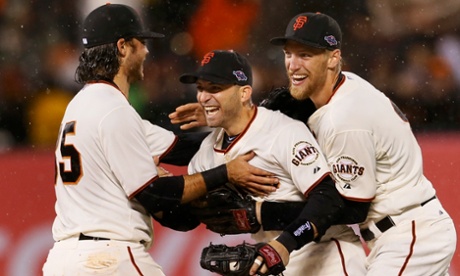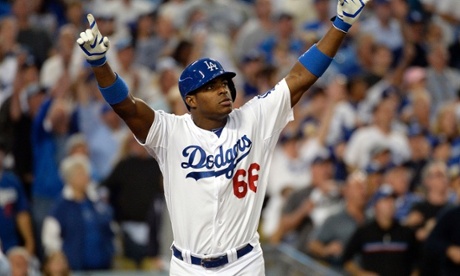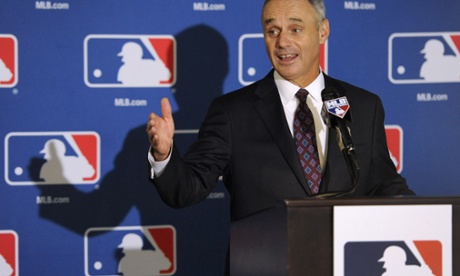It takes an instant for a baseball to travel from the pitching mound to home plate. In that short span, disaster unfolded during a game between the Cleveland Indians and New York Yankees over a century ago.
On 16 August 1920, with the two teams locked in a pennant race, the Indians’ star shortstop Ray Chapman faced Yankees pitcher Carl Mays at the Polo Grounds in New York. Mays sought to intimidate batters by pitching inside. This time, his high pitch struck Chapman in the head and the batter fell to the ground. He was eventually taken to St Lawrence Hospital, where he underwent surgery, but died. He was 28. Of the tens of millions of pitches thrown over the history of Major League Baseball, this was the only one that killed someone. Chapman’s death is the subject of a new documentary film, War on the Diamond, directed by Andy Billman.
Billman says that immediately after the tragedy: “A lot of people didn’t know if Carl Mays should be playing again.” He calls Chapman “really well-liked, not just in Cleveland … Carl Mays was not well-liked. It was a major news story.”
Chapman’s death was a seminal moment. The Indians found the resilience to beat out the Yankees for the American League pennant, going on to win their first World Series – which, it turns out, was pretty significant, with Bill Wambsganss of Cleveland turning the first and thus far only unassisted triple play in World Series history.
“Growing up as a Cleveland Indians fan, I didn’t hear much about the 1920 [championship],” Billman says. “It’s unusual for Clevelanders. We boast about Jim Brown, Paul Brown [in football] … a lot of boasting about [Bob] Feller, Lou Boudreau, Larry Doby [who helped the Indians win their second and most recent championship in 1948]. We don’t really hear much about 1920 … I did not know a lot about the 1920 team before I started [on the film].”
Billman is from Cleveland and can talk at length about the city’s sports scene and its fans – which he chronicled in a previous film, Believeland, for ESPN’s 30 for 30 series. His latest project is an ambitious venture. It posits that the 1920 season sparked a rivalry between the Indians and Yankees that’s still going strong. While the Yankees have generally had the better of it, the Indians have enjoyed some moments too – including in 1948, when they broke the AL color barrier with Doby and Satchel Paige, and in the 1990s and 2000s, when the Indians frequently thwarted the Yankees in the playoffs, such as during the infamous 2007 “bug game”.
The rivalry includes another tragedy eerily similar to the one spotlighted in the film. In 1957, promising Cleveland pitcher Herb Score suffered a frightening eye injury when a ball off the bat of the Yankees’ Gil McDougald hit him in the face. Score survived, but the team could not overcome his loss or the trading away of another star, Rocky Colavito – a deal that supposedly placed a curse on the Indians. Billman also explores the drama that played out in the 1970s, when a Cleveland native named George Steinbrenner tried to buy his hometown team, got rebuffed and purchased the Yankees instead. His family runs the Yankees to this day.
The project is adapted from a 1989 book called The Pitch That Killed by Mike Sowell, who came on board as an advisor. The filmmakers found rare footage from the era – including audio of Mays discussing his tough childhood in Kentucky, and video of the pitcher’s sidearm delivery, with his upper body parallel to the ground.
“[Mays] had a very, very rough [upbringing],” Billman says. “It was very normal for the time period. He was born in 1891 in the Midwest with a lot of things we don’t grow up with – sudden injury and death. Life expectancy for men was usually 50, not very long. Baseball was a very tough game. Someone like Carl Mays, I think, was more of the norm.” He likens Mays to Ty Cobb: “They hated each other. They had similar types of qualities – any cost to win. It was not unusual.”
Like Mays, Chapman was born in Kentucky. Unlike Mays, the shortstop was a beloved figure in Cleveland and beyond. He married Kathleen Daly, who came from one of the city’s prominent families. The couple were poised for a bright future following his anticipated retirement.
“They were set up to be prominent civically, in the news, politically, socially,” Billman explains. “It was going to be bright for success.”
However, one of Cleveland’s other stars, Tris Speaker, became the team’s new manager and convinced his friend Chapman to stay on for the 1920 season.
It was a watershed year for baseball, reflected by the three teams vying for the AL pennant. There was Cleveland, led by Speaker, Chapman and top pitcher Jim Bagby Jr. There were the Yankees, on the rise after getting Babe Ruth in a famous trade with the Red Sox – and also acquiring Mays from Boston in a separate deal. And, controversially, there were the Chicago White Sox, widely suspected of throwing the previous season’s World Series – doubts that would eventually lead to the lifetime suspension of eight “Black Sox” players.
In August, the Indians traveled by train for a series with the Yankees, which would include the fateful match-up that would kill Chapman.
“It was a hot, muggy day,” Billman says, with “bright sunlight peeking in and out,” making it hard to see the ball. The ball itself was not “bright white,” but “cloudy, yellowish … probably scuff marks,” as pitchers used dirt or spit to make it less hittable. Furthering the difficulties, “Carl Mays had a slingshot, submarine delivery. It was not coming directly at you.”
Chapman stepped up to the plate. Billman compares him to a modern-day star – Ichiro Suzuki, “swinging out of the box, swinging and running to get to first base. It’s where the game was [back then].” The director notes that the teams played in the “heat of a pennant race, the Yankees and Indians trying for their first AL pennant. On top of that, Carl Mays had no problem hitting people.”
Mays’ pitch was too high to bunt, and it hit Chapman. Mays fielded the ball, apparently thinking Chapman had made contact with his bat, and looked to get the out at first base. Mays said afterward that he did not think Chapman had ever seen his pitch.
Reflecting on the scope of the tragedy, Billman says that it is “amazing, before that pitch, it hadn’t happened before. It was not a game that really relied on health and safety. It was really how the owners saved money. Batting helmets did not appear until the late 1950s.”
In archival audio footage, Mays said, “I didn’t hit Chapman, Chapman hit hisself. He run into the ball that was over the plate but as high as his head. That’s how Chapman got hit.”
Billman is forgiving of Mays though. “Did he intentionally kill Ray Chapman?” Billman asks. “No, absolutely not. Did he try to pitch inside? Absolutely. It’s still part of the game today.”
Yet, he says, what was not part of the game back then was “modern medicine.”
“They did not rush [Chapman] to the hospital,” Billman laments. “Today, they would rush him immediately.”
Chapman died the next day, with crowds packing his funeral service to comfort his widow.
“When something like this happens, it’s not only jarring to a city but obviously a family – in this case, [Kathleen] Daly’s,” Billman reflects. “They never really got over it.”
Kathleen Chapman remarried, but less than a decade later, both she and her young daughter were also dead. Addressing reports that she killed herself, Billman says that we will “never know.” Her daughter died during a measles epidemic.
“It’s a sad story,” Billman says. “It’s really, really sad, especially talking about their daughter who passed away.”
As for Mays, some questioned his reaction to Ray Chapman’s death.
“I think he felt terrible but was not feeling guilty,” Billman says. “He felt like pitching the next day, back on the mound … There were more Carl Mayses in 1920, clearly, than there are in the early 21st century.”
Yet, he notes, “after that moment, baseball really changed. Just doing my research, you don’t really see people like Ty Cobb and Carl Mays anymore. They kind of fade away because of that incident.”
Chapman’s grave at Lake View Cemetery remains a site where Clevelanders come to leave baseballs, poetry and quarters as signs of respect.
“It really is a pilgrimage,” Billman says. “It’s one of the things that says a lot about who he was, what this means, at least among Clevelanders. I’m not surprised it still happens today, being from Cleveland. People are still writing and sending things about 1920 – 100 years ago.”











